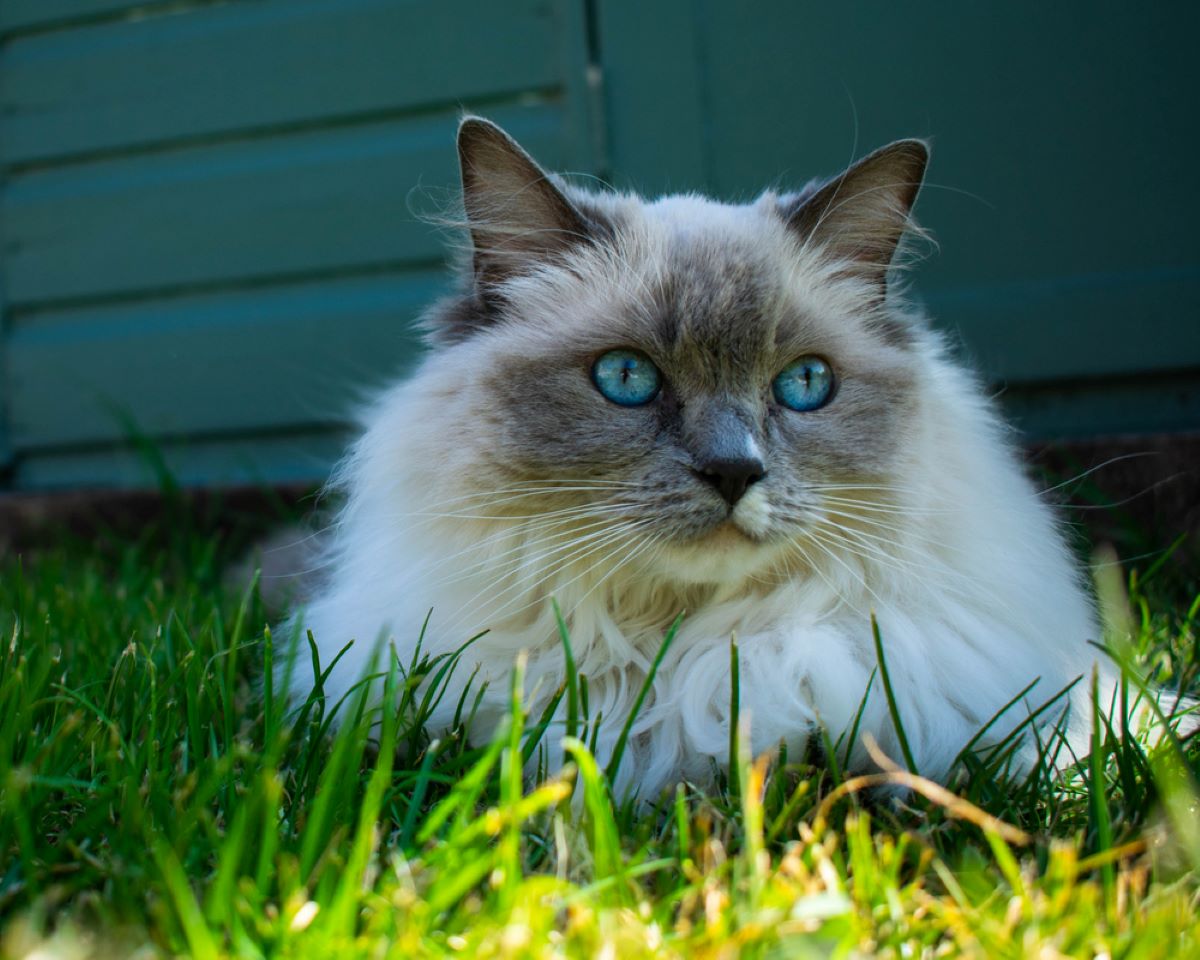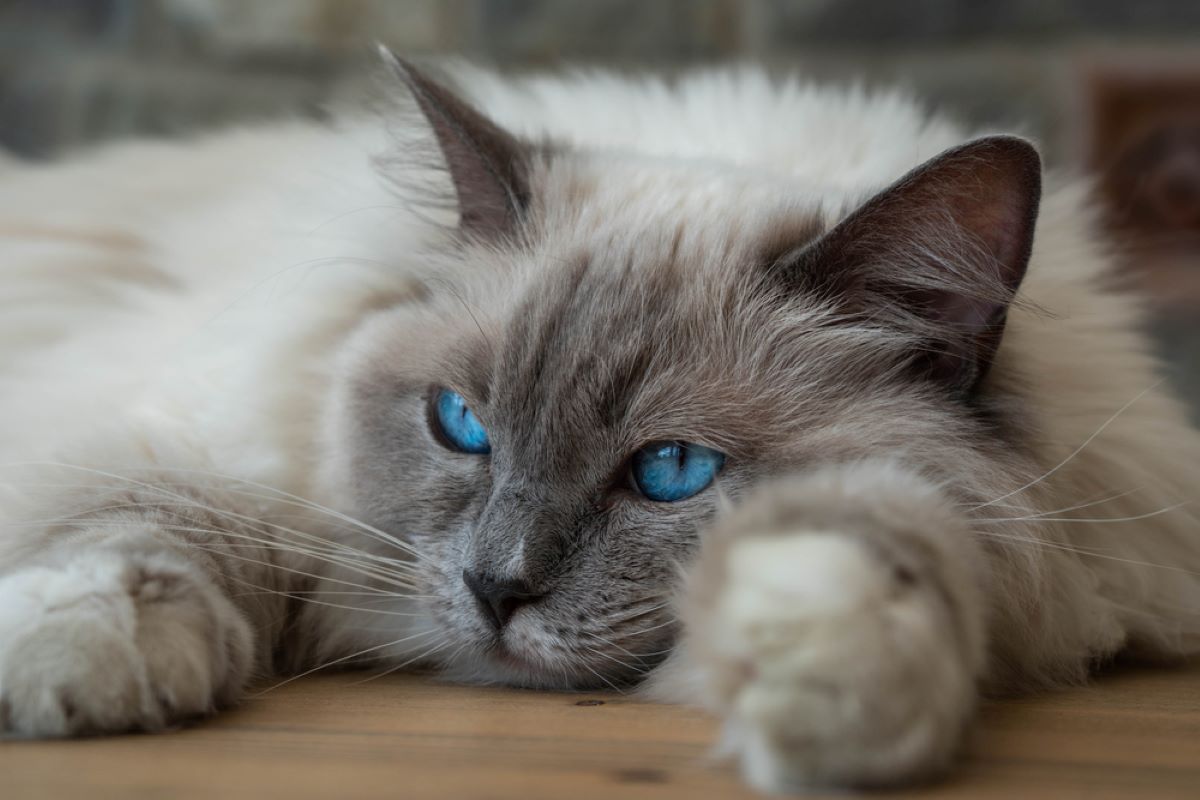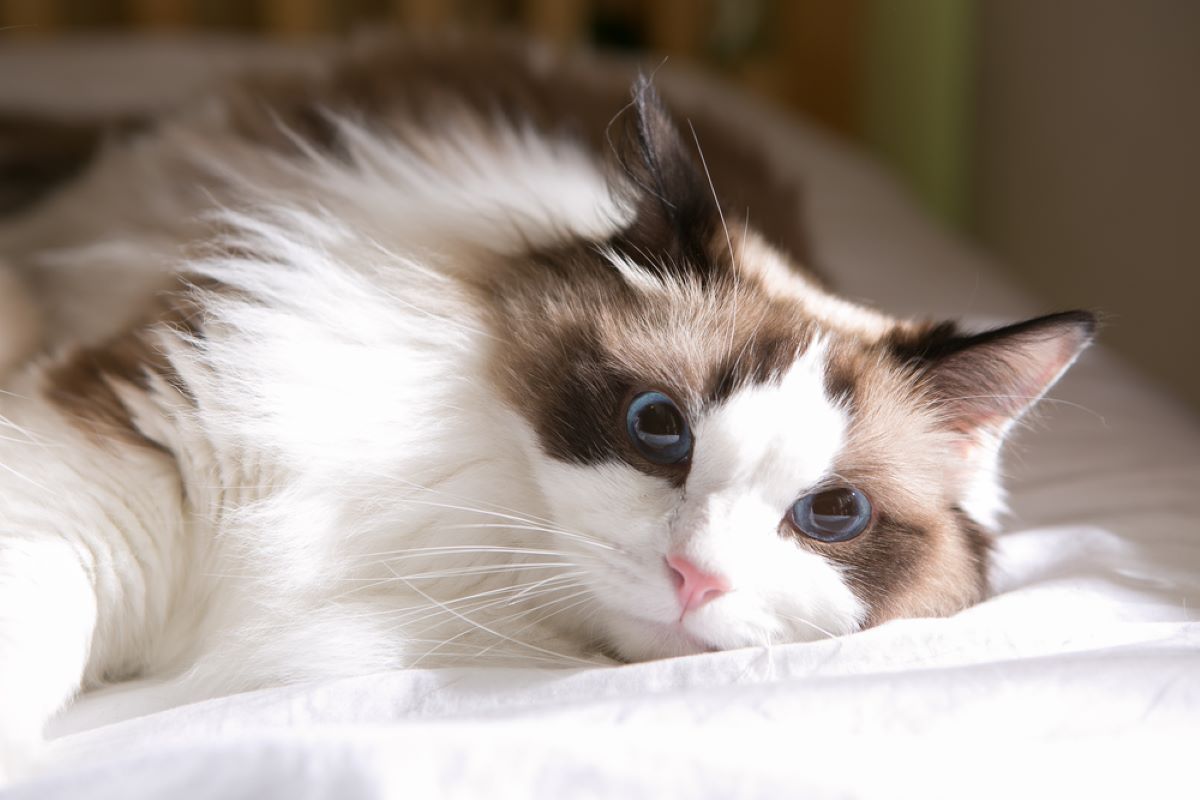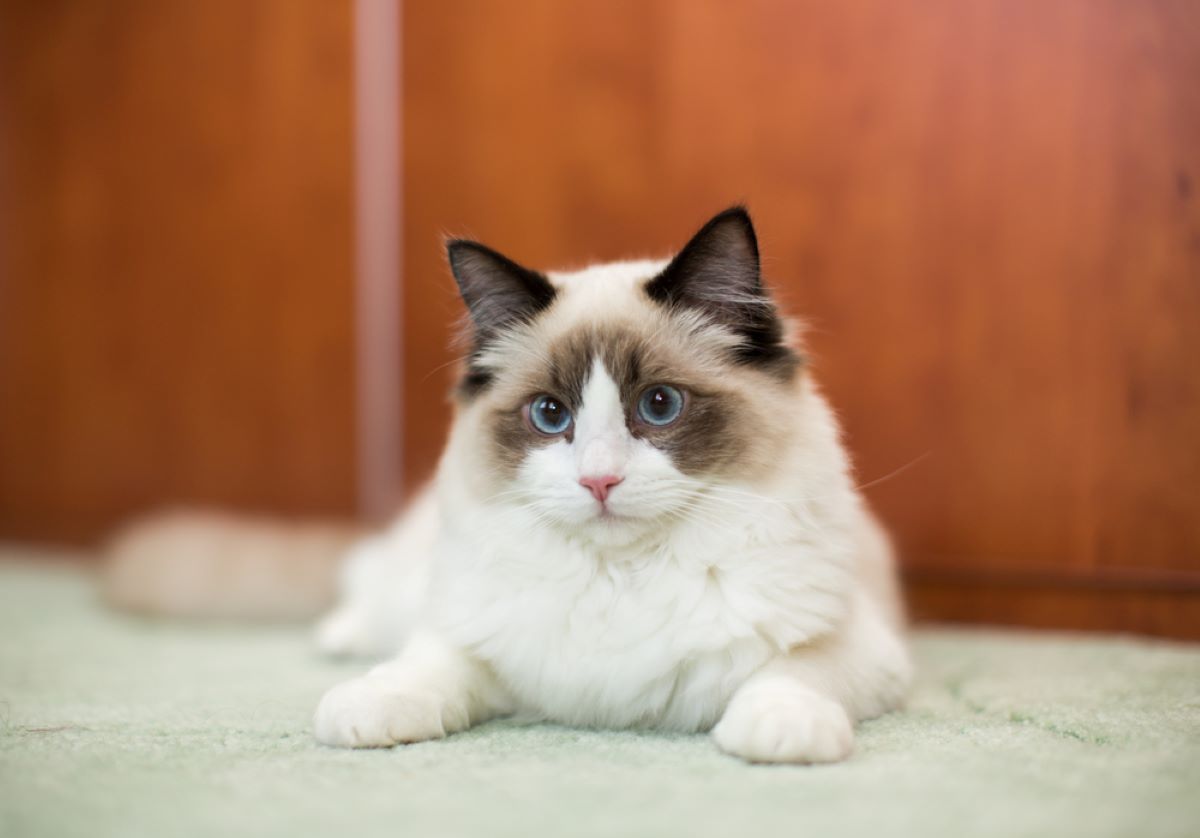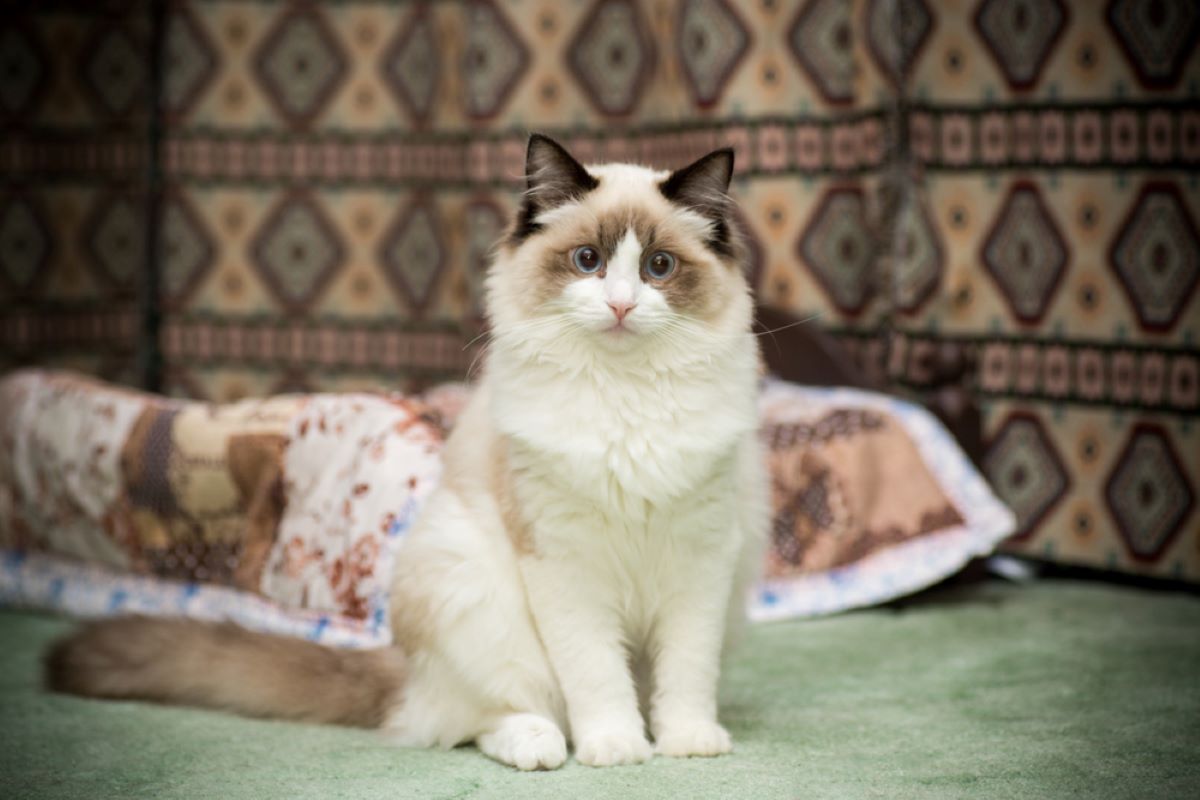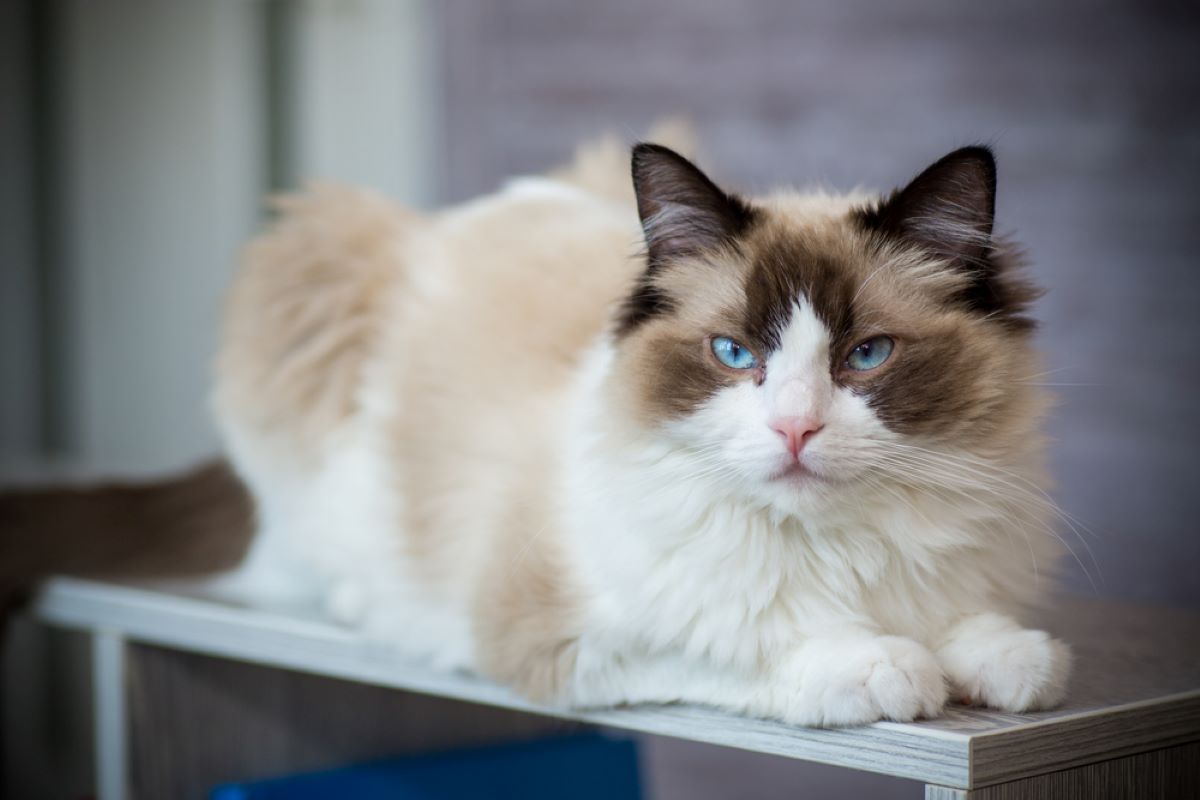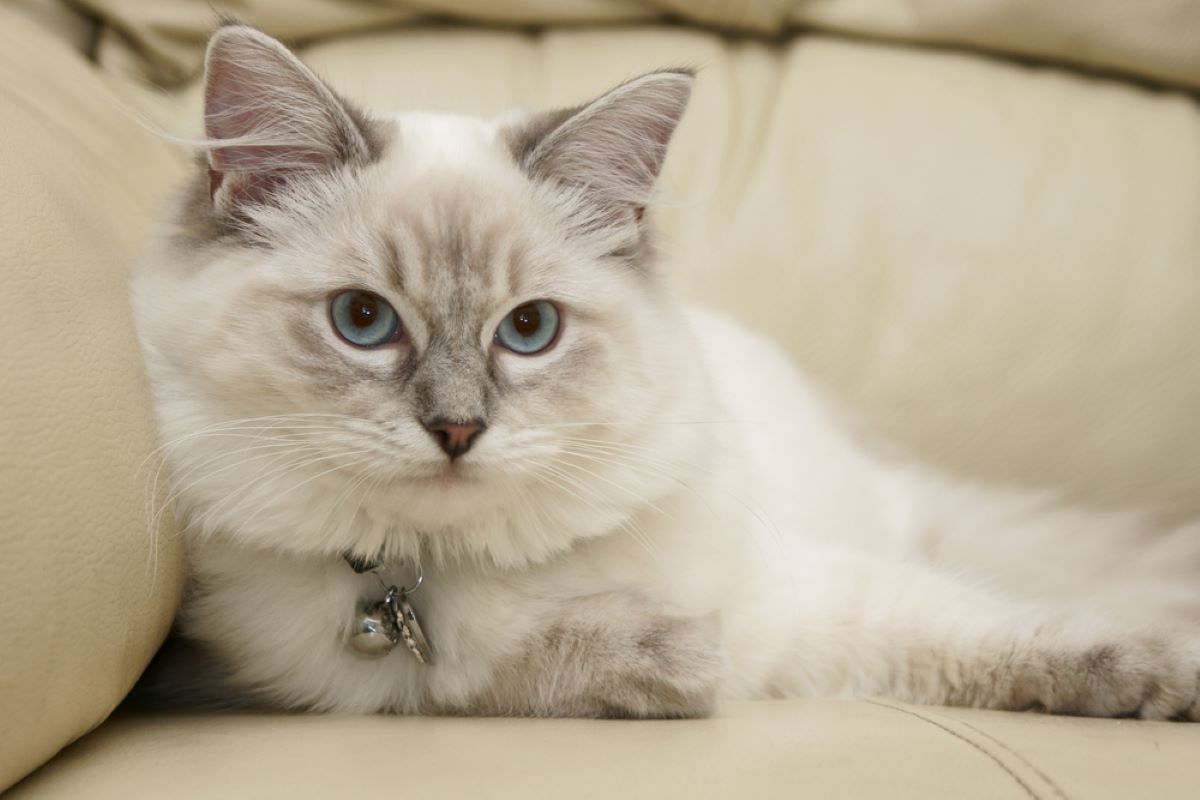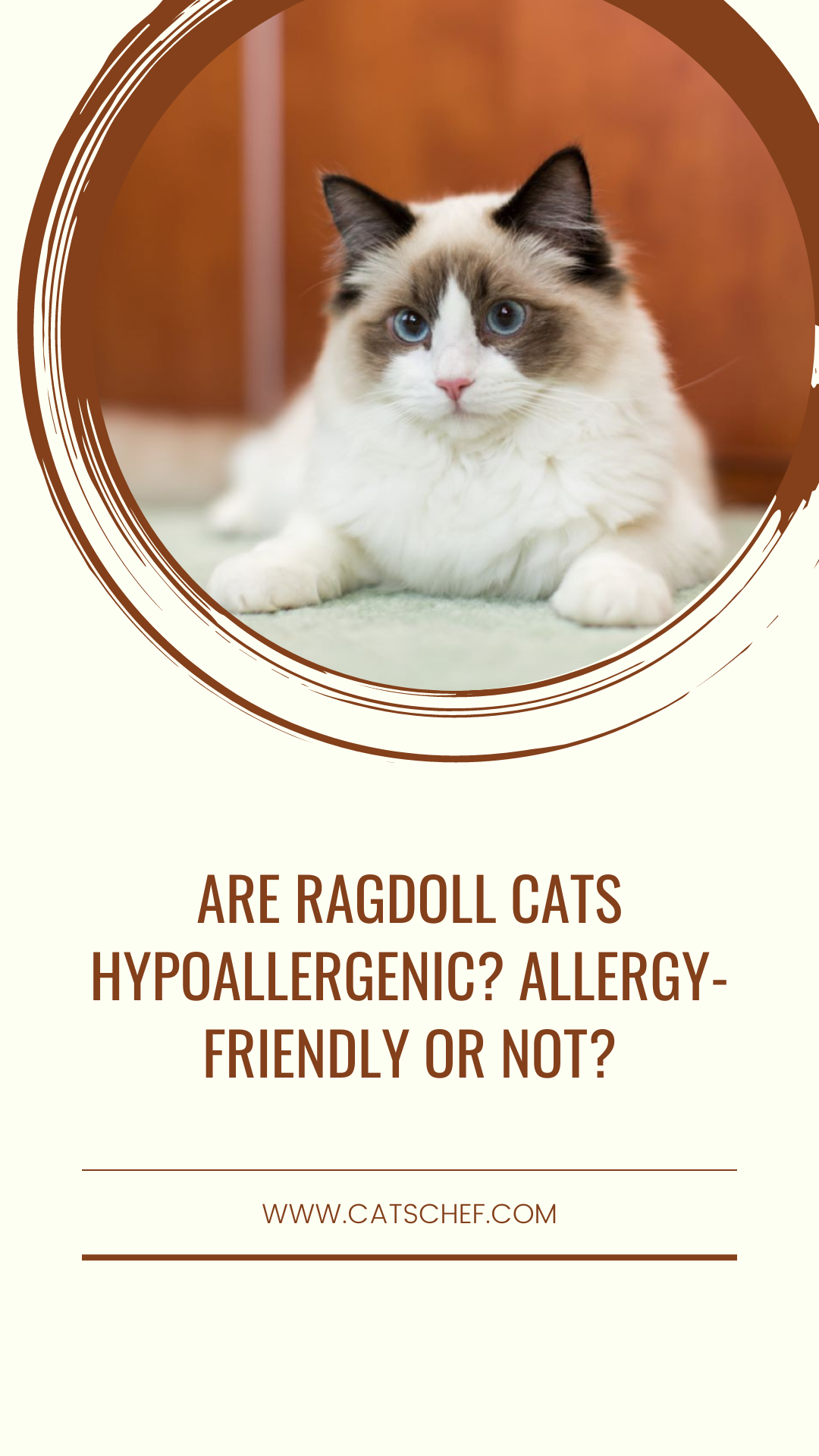📖 Table of Content:
We are once again reunited with the everlasting allergy-related question, this time concerning very special fluffers. So, are Ragdoll cats hypoallergenic or not?
When you think about Ragdoll cats, the first thing that pops into your mind is probably all that fluff they have. At least, that’s the case with me. But also, their out-of-this-world beauty is beyond captivating and when combined with their great personality… well, let’s just say it’s a match made in Heaven.
But is there a possibility that those fluffers are walking allergens? Is their sole mission to make your life a living sneeze fest? You already struggle with allergies, but do you really need that much fur to trigger them even more? Or is there actually no need to worry about it?
If these are your exact questions and thoughts, then you have come to the right place. Here at “Cats Chef”, you will find people who understand you, sympathize with you, have been through the same or similar things as you, and most importantly, who are ready to help you.
Not only will you find the answers to your question, but you will also learn other interesting information about cats and allergies that you might have been unaware of.
So, let’s cut to the fluff and see if Ragdolls are hypoallergenic or not.
Are Ragdoll cats hypoallergenic?
Right off the bat, the answer is a resounding “No!”. Unfortunately, Ragdoll cats do not belong to the hypoallergenic club of cats. Even though they don’t shed as much (I know, right? Who would have thought!), their fabulous fur can still cause sneezes.
However, this does not mean you have to completely steer away from these fluffy beauties. Ragdolls are actually known to be the most hypoallergenic cats among non-hypoallergenic ones.
I know, it’s hard to wrap your brain around this one, but what I am trying to say is that Ragdoll cats will probably not flare up your allergies that much. Although, some people might disagree with this.
The reason people are divided when it comes to Ragdoll cats and allergies is that there is so much misinformation about the two topics in general.
And also, if you are on a quest of finding a completely hypoallergenic cat, you might not actually know what you are looking for.
But don’t worry! We are here to shed light on the truth. Let’s see why are Ragdoll cats considered non-hypoallergenic.
Let’s bust some myths about cats and allergies
There is one thing we can all agree with: allergies are no fun! Nobody loves an itchy nose and watery eyes, especially not when your beloved fluffball causes them. It is a bummer when you adore your cat, but your allergies are trying to keep you two apart!
It’s truly an epic love story, but one that can most certainly have a happy ending! You and your Ragdoll cat can have your happily ever after despite the fact that she is not considered hypoallergenic.
It is truly amazing what a bit of knowledge and simple awareness can do to our lives. Therefore, let’s discuss some most common myths about cats and allergies, so we could be able to determine what is true and what is not.
1. Myth number one: Cat fur is an allergen
This is usually the one most people are wrong about. But, cat fur is not an allergen.
The actual fact is that oil glands in the cat’s skin and the cat’s saliva are the main culprits. They contain the protein called Fel D1 which is the primary allergen found in cats and kittens.
There are also at least seven other allergies-producing proteins that over time accumulate on a cat’s fur and skin. During grooming, those allergens are released into the environment as the cat sheds dander (tiny scales from skin and hair).
Fel D1 is a very sticky protein that, when released, spreads through space at almost the speed of light. Then it sticks to walls, furniture, and other surfaces along with hair and dander the cat sheds. Once stuck, it can remain there for over a year or even more.
2. Myth number two: Allergens are evenly distributed across a cat’s body
The actual fact is that the highest amounts of allergens are found in a cat’s face and neck.
As the cat grooms herself regularly, she spreads those allergens across her body by licking. And then, transfers them by rubbing herself against people or any kind of object.
3. Myth number three: Some cats don’t have allergens
All cats produce allergens, but some just produce more than others. The type and amount of allergens vary from breed to breed. People can react more severely to one cat while being almost immune to the other.
There is no truly hypoallergenic cat in the world. Some might be on the less allergenic side, but all breeds have allergens. Yes, even the hairless cats do.
Why are Ragdoll cats not hypoallergenic?
Now that we have learned about cats and their connection to allergens, we can focus on Ragdolls specifically. It is time to discuss why are Ragdoll cats not considered hypoallergenic.
We have already mentioned that the oil glands in a cat’s skin and saliva produce a Fel D1 protein which is the main allergen in cats. But if that protein is released with dander, and the dander is not found on a cat’s fur, where does it come from?
Well, we now have to mention another interesting fact about cats. Generally speaking, they have two kinds of fur: the top coat and the undercoat. The top coat, also called an outer coat, is made of awn and guard hairs, which are coarser and usually determine the color of cats’ fur. They also keep cats dry.
The undercoat, however, is made of fluffier hair that protects cats and keeps them warm. But, what we are most interested in, is that the undercoat is the place where the aforementioned dander builds up, causing all those itchy and red noses and watery eyes.
Ragdolls actually don’t have the undercoat, which is why I said at the beginning that Ragdoll cats are the most hypoallergenic cats among non-hypoallergenic ones.
Still, another way for cats to spread allergies is through their saliva. Some cat breeds contain more or less of Fel D1 protein in their saliva. Generally speaking, female and neutered males produce less of this protein. So, our Ragdoll beauties can mainly cause allergic reactions in humans this way.
Some people have mild allergic reactions and can tolerate Ragdoll cats, but others have a sneeze fest whenever they’re around them.
How to keep your allergies under control
So, somehow you have found yourself in a situation where a Ragdoll cat became the center of your whole world, but she is not quite hypoallergenic as you hoped she would be. Luckily for you, there is a way to put an end to your allergies in a few simple steps.
Here are 6 awesome tips which will help you deal with the unfortunate situation and make all the sneezing a thing of the past.
1. Regular grooming, my friend!
Are Ragdoll cats hypoallergenic because they don’t have an undercoat? No! They might not shed as much, but they still have to be groomed.
Since they produce most of the Fel D1 protein in their saliva, and since like any other cat, they lick themselves, it’s important to regularly and thoroughly brush their fur. And because Ragdoll cats are not hypoallergenic, you could make sure to brush them somewhere where you don’t spend that much time.
You can brush them in the bathroom, on the balcony, or in your yard, if you happen to have one. You can also opt for brush mittens and a high-quality slicker brush to minimize the chances of hazardous allergens attacking you.
2. And regular bathing!
Also, make sure you regularly bathe your fluffball. Maybe cats are not really famous for being water lovers, but if properly taught, they can actually find a special place in their little hearts for bathing.
Bathing will not only ensure they are clean and dirt-free, but it will also help to remove that unwanted and dangerous dander.
There are also cat shampoos specifically designed to remove dander and ensure you cuddle with your cat more, and sneeze less.
3. Keep your kitty healthy
It is important to keep your Ragdoll kitty healthy for various reasons, one being to reduce the spread of allergens.
Cats can be super anxious creatures because of many inner and outer conditions. Anxiety causes them to have strange behaviors, and excess self-grooming is one of them.
If your Ragdoll is healthy and happy, with zero health problems, irritations, stress, and anxiety issues, she will shake, scratch, and groom herself less. And therefore, not spread those bad allergens.
4. Don’t forget the cleaning, pawlease!
You can manage the “Ragdoll cats are not hypoallergenic” issue pretty well if you keep your house organized and cleaned. Regular dusting and vacuuming are a must, as well as moping the floors with cat-safe floor cleaners.
My sister managed her allergic reactions by investing in a robot vacuum cleaner that vacuums her house several times a day. Her Ragdoll is not very fond of it, to be honest, but hiding in a different room is a small sacrifice on her part.
You don’t have to invest in a robot vacuum if you do not want to. There are also many vacuums for pet hair on the market which can be good for you. Although, the regular vacuum will do the job just as well.
Another thing you can do is consider replacing some furniture in your home. Some materials act like magnets for cat allergens, and we already talked about how sticky they can be. So, opting for something like leather or faux leather could be a good idea.
However, I am well aware that not everyone is in a position to do this. Therefore, schedule cleaning sessions with your Ragdoll. Let the music blast from the speaker while you sweep those floors (just make sure you don’t mistake your Ragdoll for a mop).
5. And purrify that air, would you?
Air purifiers can be of great help to you, as well. They can get rid of those allergens that tend to linger in the air.
The best thing would be to opt for air purifiers with HEPA filters since they can collect almost 99.9 percent of dust particles, pollen, mold, bacteria, and nasty cat allergens.
Not only will this make your allergy situation significantly better, but it will also improve your sleeping schedule since you will not be sneezing all night.
6. Keep your kitty away from your laundry!
Maybe your Ragdoll does not do this, but you have probably seen a picture or a video of a cat sitting on a pile of freshly cleaned and ironed laundry. That is something they simply adore doing!
But, even if your cat does not do this, she surely rubs herself on you and your clothes. She might rub herself around your legs, arms, or even face. No matter the location or her adorable habit, the chances of your clothes being covered in tiny cat hairs are extremely high.
So, to prevent yourself from accidentally eating or inhaling pieces of her fluff, you should do your laundry regularly. I know it can be tiresome, but just remember that the washing cycle usually destroys all the allergens in your clothes and that your nose will be infinitely thankful for it.
You can also get those little lint rollers for when you are on the go or when your cat comes in contact with clothing items that are simply not designed to be washed frequently. Those can be helpful in removing any cat hair sticking to your clothes.
Should you still consider getting Ragdoll cats even though they are not hypoallergenic?
“I have found out Ragdoll cats are not hypoallergenic, and my world fell apart! What should I do?”
You might be asking your best friend this question over coffee, hoping she would know just the right thing to do.
Your friend might tell you to immediately get rid of your Ragdoll cat. She might say your health is more important and that your kitty can find happiness in another home. She might even imply that giving your Ragdoll to someone else is not that big of a deal. (How dare she?)
But if that is not the answer you want to hear, don’t worry! I got your back!
Let’s make one thing clear: you do not have to get rid of your dearest fluffball!
There is absolutely no reason for the love between you and your Ragdoll cat to end just because she is not hypoallergenic enough for you. You two are more than able to deal with any issues that come your way.
Having cat allergies does not have to mean you have to say goodbye to cat care for the rest of your life. It just means you have to adjust your life a little.
If you follow the 6 tips above, you can reduce the number of cat allergens in your house and therefore decrease your allergy symptoms. Just be patient and give time for those tips to start working.
However, if they are not enough, you can talk to your doctor about some medicine you can take. There are allergy reliefs you can take for temporary relief of symptoms like sneezing, itchy and runny nose, watery eyes, and so on.
Your doctor might even suggest you opt for allergy shots or other medical treatments. Depending on the severity of your condition, your doctor might even discourage you from owning a cat, but that is a very rare option.
Most people usually manage to effectively deal with their allergy symptoms. So calm down! I’m sure you are one of those people!
And also, just imagine how many of your flaws your cat has to deal with. Your runny nose is nothing compared to her problems, I’m sure.
